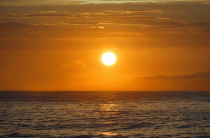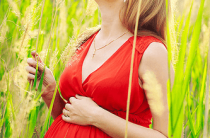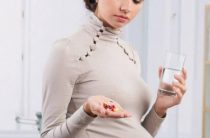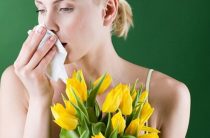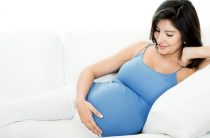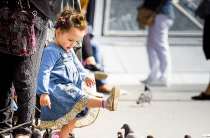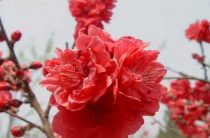Scientifically, an allergy to flowering is called “polynosus”. This disease is provoked by pollen in the air, which, when it enters the body of a person who is sensitive to its components, causes unwanted allergic reactions. The patient's body, for certain reasons, perceives the pollen of certain plants (often one) as an enemy and triggers the appropriate immune responses.
For successful prophylaxis, which is necessary to prevent an allergic reaction, you need to be familiar with the characteristics of the local flora that thrives in your area. Finding an allergy to flowering in May is not at all difficult. Symptoms of pollen allergy have a pronounced seasonality of their manifestation. Symptoms overtake the patient along with the beginning of flowering of the allergen plant.
And so, the main plants flowering in May are:
- Bulbous flowers (daffodils, hyacinths, hazel grouse) - these blooms grow in open areas, well lit with loose soil;
- Lilies of the valley - grow in the shade and places with high humidity;
- Pansies - a forest plant that does not tolerate a lack of moisture;
- Aquilegia is a flower that loves humus-rich soil and high humidity;
- Dronicum - blooms best in a small shade, but also thrives well in a meadow;
- Pine and spruce;
- Deciduous trees (oak, poplar, ash, maple, aspen, elm, etc.).
The notorious ambrosia deserves special attention. This shrub is the cause of almost half of all cases of allergy to flowering, because it has an enormous allergenic potential. Allergic reactions to other plants are less common.
Symptoms of pollen allergy
As soon as the pollen concentration of the allergen plant becomes high, which occurs almost immediately after the start of flowering and varies slightly in some plants, the patient begins to experience pollen allergy symptoms:
- Eyes: This is one of the first organs to experience the symptoms of a pollen allergy. Being a respiratory allergen, plant pollen easily penetrates the mucous membrane of the eye and provokes inflammation, redness of the vessels of the eyes and skin around the eyes, tearing, pain and other discomfort in the eyes, increased sensitivity to bright light;
- Organs of the nasopharynx. Our respiratory system tries to clear the body of the allergen, which is a natural response to irritants. This calls for sneezing, discharge of clear contents from the nose, dry allergic cough. The vessels of the nose are the most sensitive to allergens, therefore, after it enters, vascular expansion occurs, which makes it difficult for the patient to breathe through the nose;
- Bronchial asthma. Asthmatic manifestations are common phenomena in allergies to plant pollen. In such cases, we speak of bronchial asthma of an allergic nature.
Allergic bronchial asthma:
Allergic bronchial asthma is a narrowing of the bronchial lumen caused by the influence of an allergen. Attacks of allergic bronchial asthma are the same as in other types, the main symptoms: cough, chest pain, asthma attacks.
Risk group
Transient pollen allergy can develop in pregnant women of young children. This is due to the fact that the work of immunity, both in the expectant mother and in the child, is absolutely unstable in the first years of life.
Also at risk for this disease are people living in ecologically disadvantaged areas. The immune system, under adverse environmental factors, is exposed to irritating effects, which is fraught with the development of allergies. This is supported by the fact that the more favorable the environmental situation, the better the statistics on allergic diseases.
Flower Allergy Remedies
Pollen allergy causes significant inconvenience to the patient, since its symptoms make it necessary to completely change the rhythm of the patient's life, while the allergen plant is flowering. Allergy remedies are: measures for general health and immunity, preventing contact with pollen (barrier therapy), drug therapy, allergen-specific immunotherapy. These measures are most effective when taken together. In this case, the safest treatment option occurs, since the relief of allergy symptoms with drugs alone is fraught with the development of complications. If this method is combined with barrier therapy, which is based on the obstruction of contact with pollen, in view of which a person receives a smaller amount of the allergen, then the need for high dosages of drugs disappears. In total, there is less harm to the body, with greater efficiency.
Immunotherapy for pollen allergy
Immunotherapy of allergic diseases is a specific method of treatment, which is based on the systematic contact of the patient with allergens, due to which the body's resistance develops. After immunotherapy, the body loses its ability to react to the presence of an allergen for a while, because over many months of contact, its sensitivity becomes dull. Unfortunately, immunotherapy does not cope with the task of completely curing the patient, but nevertheless, sessions of this therapy can significantly alleviate the course of the disease by acting on the very cause, and not on the symptoms.
Immunotherapy is carried out in the form of an injection with a solution of allergens specific to the patient. Injections are carried out intramuscularly, with a gradual increase in dosage. Injections are carried out 2-3 times a week, depending on the sensitivity of the body, the type of allergen, and the course of the disease.
A few hours before vaccination, you must refrain from physical activity. Since, an increase in the amount of blood supplied to the muscles during exercise leads to the fact that, along with it, the concentration of lymphocytes in the muscles, which produce antibodies, increases in the muscles. An increase in the level of antibodies at the injection sites can provoke powerful allergic reactions even when using the minimum dosage.
If you are undergoing treatment with any drugs, be sure to discuss this with your immunotherapy doctor. It must be remembered that immunotherapy is a method of treatment based on the contact of the patient with the allergen. This means that despite the minimum dosage, the risk of side effects still remains. Therefore, after the first injection, it is necessary to remain under medical supervision for a long time in order to be able to immediately prevent severe complications from contact with the allergen.
For pollen allergies, immunotherapy is not carried out during flowering. This is mainly done some time after the symptoms caused by the appearance of pollen in the air have subsided.
Do not self-administer immunotherapy. Often, in publications far from medicine, a variant of immunotherapy is given, more precisely, a parody of it, with the use of pollen infusion, in the form of tea, or in some other way. This is unacceptable, since standardized allergen solutions are used in immunotherapy, which have a strict concentration. In artisanal conditions, this cannot be achieved, therefore, the independent use of immunotherapeutic practices carries a potentially high danger to the health and life of the person using them.
Prevention of pollen allergy
Pollen allergy can be successfully prevented. Prevention methods involve eliminating contact with the allergen. To do this, you need to know exactly which pollen provokes your allergies. This allows you to accurately calculate the time of onset of a seasonal allergic reaction. The most effective methods for preventing pollen allergy are:
- At the time of flowering plants - allergen to leave its habitat. In general, plants bloom no more than three weeks a year. Even a working person can calculate a vacation with this in mind.
- Alas, not everyone can go to other places during the aggravation. Therefore, it is necessary to protect yourself from contact with pollen as much as possible. This can be done in several ways: firstly, do not leave the house in dry weather and strong winds; secondly, use barrier nets on windows and thirdly, wet cleaning of the premises;
- Use air purifiers for the room in which you stay for a long time;
- Wear special respirators and sunglasses that minimize the allergen in the street;
- The use of special solutions for cleansing the nasopharynx containing sea water. These procedures allow you to get rid of the accumulation of allergens on the mucous membrane of the nasopharynx.
Medicines for allergies to flowering
To date, drugs that are used for pollen allergy can only relieve allergy symptoms for the duration of the period of action. In case of pollen allergy, in addition to the standard means used for symptomatic therapy (antihistamine tablets and corticosteroid injections), topical preparations (drops in the eyes and nose) are also widely used, which is associated with the peculiarity of the development of allergic symptoms that affect these organs. The use of local forms of drugs allows you to minimize harm to the body, since such drugs act directly at the point of contact.
Antihistamines.
In our body, histamine is the hormone that triggers allergic reactions. In order to prevent the effect of histamine on cells, antihistamines are used. Their use allows you to prevent or relieve existing allergy symptoms.
Antihistamines have various side effects: they can cause weakness, daytime sleepiness and constant fatigue, dry mouth, constipation, disruption of the gastrointestinal tract, dry mouth. The use of antihistamines has one feature that is characteristic of all of them: they work best when they begin to be used before contact with the allergen.
Erius is an antihistamine in the form of tablets. Effectively relieves symptoms of pollen allergy (allergic rhinitis and conjunctivitis). Side effects develop rarely and are mainly manifested by decreased performance, dizziness and a feeling of nausea, increased liver enzymes. In general, the drug is well tolerated. Contraindicated for use in pregnancy. The drug has a strong and long-lasting effect on the neutralization of allergy symptoms. It is enough to apply once a day.
Claritin is an antihistamine used to relieve allergy symptoms. It is a modern highly effective drug, with a small severity of side effects (approximately 2% of the total number of cases of use).
Tavegil is a first generation antihistamine. Requires frequent use, as its effect lasts from 5 to 7 hours. It is not used to treat allergies in pregnant women. Causes the following side effects: tachycardia, constipation, dry mouth, weakness and lethargy.
Hormonal remedies for pollen allergy
Hormonal drugs for pollen allergy are used only in cases where the side effects are intense. Corticosteroid injections are a highly effective way to manage the symptoms of an allergic reaction. However, it must be remembered that when used in general, corticosteroids cause various side effects. For this reason, the treatment of allergic reactions with corticosteroid injections often lasts no more than 5 days, solely on the testimony of a competent specialist.
Eye drops for pollen allergy
Allergy eye drops are different groups of drugs (antihistamines, vasoconstrictors, corticosteroids) used to treat manifestations of allergic conjunctivitis.
Antihistamine drops are topical agents that are used to treat the eye manifestations of an allergic reaction, which are a large part of the symptoms of a pollen allergy. Antihistamine drops relieve redness, itching and discomfort in the eyes.
Levocabastin - effective antihistamine drops. Relieve the symptoms of allergic conjunctivitis, apply several times a day. May cause the following side effects: migraine attacks, blurred vision, weakness and fatigue.
Azelastine (allergodil) is a drug that has a powerful, long-term effect on the elimination of local manifestations of allergies. Apply several times a day, with equal intervals between instillations of 1-2 drops in each eye, depending on the severity of the symptoms. Often, cause side effects only when used incorrectly. Azelastine is not used during the first trimester of pregnancy, as well as during breastfeeding.
Vizin (tetrazoline) is an eye drops medication that is prescribed in case of severe reddening of the eyes caused by vasodilation. It is used strictly according to the instructions, no more than 4 days in a row, because it causes a strong drug dependence.
Diet for pollen allergy
During a pollen allergy, the so-called “hypoallergenic diet” is used. It is based on the exclusion of products that, due to a certain effect on the hormonal regulation system, can increase allergy symptoms, although they themselves are not allergens. The use of a hypoallergenic diet is not able to get rid of pollen allergy, but it can alleviate the course of the disease itself.
These products include:
- Beekeeping products;
- Seafood, in particular: crustaceans, molluscs and fish caviar;
- Berries: red and black currants, strawberries and raspberries;
- Citrus fruits: oranges, tangerines, grapefruit;
- Egg yolk;
- Hard cheeses;
- Smoked meat, sausages and canned fish;
- Sweet carbonated drinks;
- A variety of nuts (pine, walnut, medicinal, etc.)
